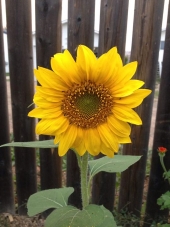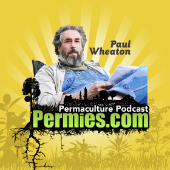
 1
1





 1
1




Nolan Robert wrote:I'd be worried that the compost would just dry in my southern Californian heat and would turn into dust

Nolan Robert wrote:Ideas and opinions about the article
 1
1




“Enough is as good as a feast"
-Mary Poppins








"If you want to save the environment, build a city worth living in." - Wendell Berry




Frank Brentwood wrote:My knee-jerk reaction is "Go for it!".
My second thought is "Hmm, it depends."
If you have a healthy microherd (bacteria, fungi, insects, worms, etc.) in your soil, they should gobble up all of that organic material and incorporate it into the soil.
How fast they gobble would depend on lots of factors. For instance:
1) Available moisture: The herd likes a drink with whatever it's eating. If you have to inject a lot of water (and labor) into the system to keep it moving in the desired direction, that's not good.
2) Food balance: All the microcritters don't eat the same thing. Supplementing the compost layers with other stuff to keep the whole herd happy could tip the cost-benefit ratio too far into the 'cost' side.
3) Plantings: The plants among the mulch will have an influence as well. Shade will help with keeping the moisture around. Accumulators will help keep the herd fed. Cover cropping and chop-n-drop on top of the compost would combine both functions.
Is there a reason that you don't want to continue as you have been with the tree trimmings on top of the compost?
Have you had a soil test done? What's the worm population like? Depending on your percentage of organic matter, dumping a few inches of compost on your soil could have a big impact on the health of the soil food web and whatever you are growing.
As for not having enough clay/silt, I think you would have to put down several hundred tons per acre for a number of years to have any detrimental effect.




Nolan Robert wrote:I haven't had a test done yet, and I have absolutely zero worms. I have very dry, non absorbent sandy soil.
Nolan Robert wrote:Maybe I could compost over a garden area by laying nitrogen down and covering it with carbon, lay down chop and drop, cover it with nitrogenous material, and cover that up again with carbon material to keep in the moisture? It would be mulch and also be decomposing and when it eventually becomes compost than I can start over again in the same area?
It's so dry here year round that I don't think the microbial populations are high enough to decompose chop and drop/mulch on their own, so I feel like it might be more useful to apply the mulch when it has already been broken down and composted. Otherwise the mulch just oxidizes when it's left alone on the soil surface. Just turns grey.
I don't have any reason really for changing the way I do it, just exploring different possibilities. It's hard to haul in all the tree trimmings and also I'm not getting the mulch from what I grow, so I'm trying to "close the circle" if you get my meaning. I'd like to find the most efficient way of feeding the micro organisms in the soil and increasing the soil health. I know that covering the surface is an extremely important part of this.













|
I am mighty! And this is a mighty small ad:
Rocket Mass Heater Resources Wiki
https://permies.com/w/rmh-resources
|








